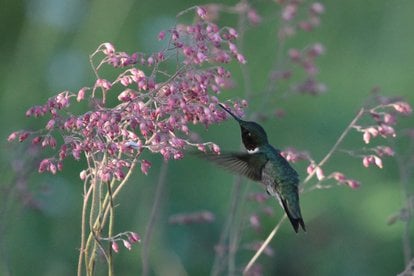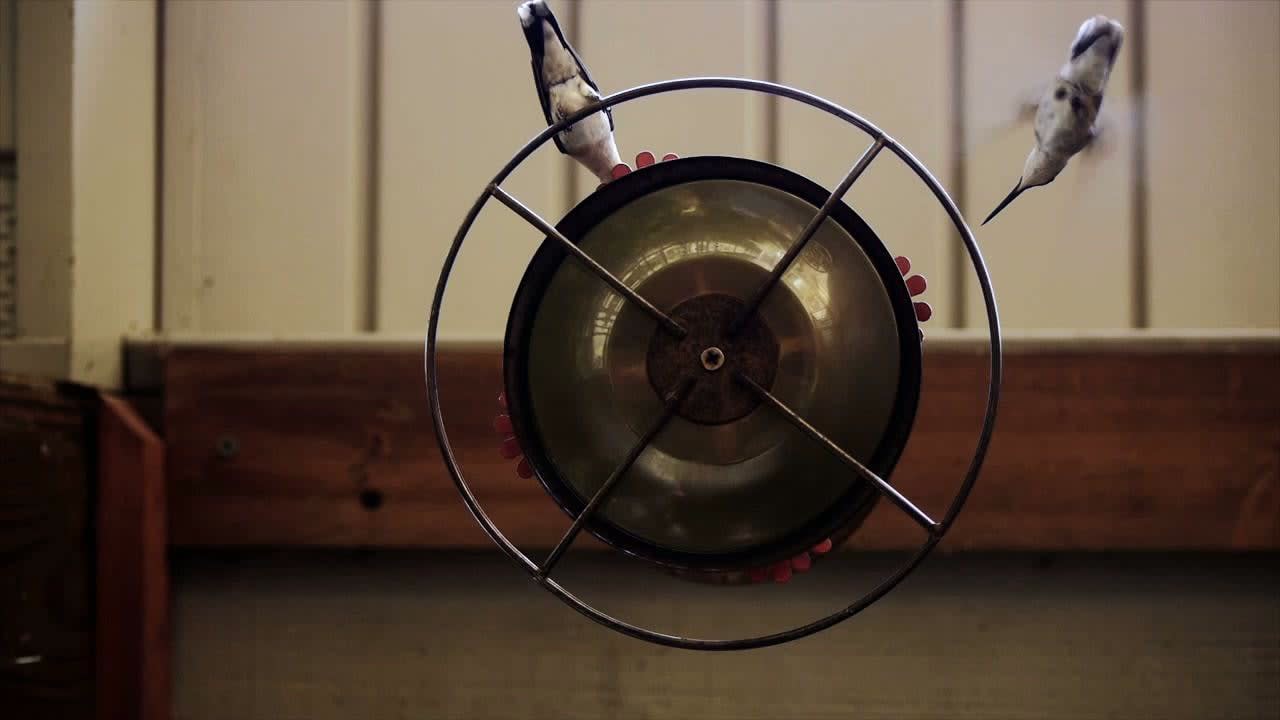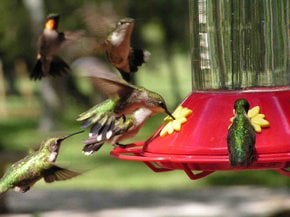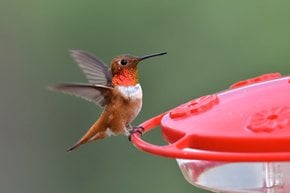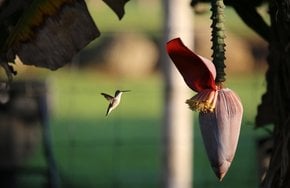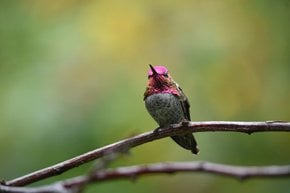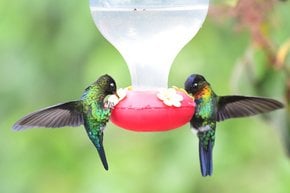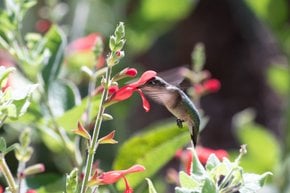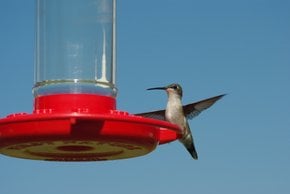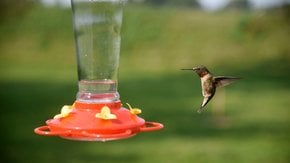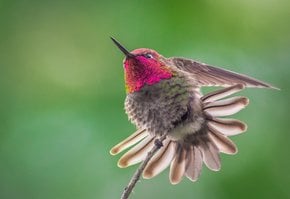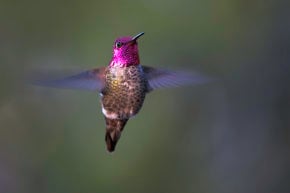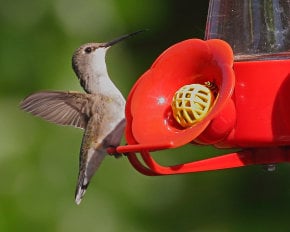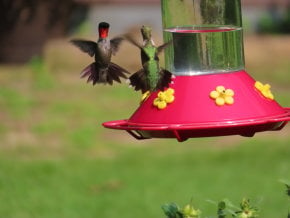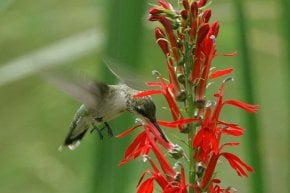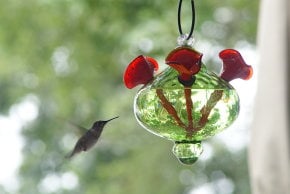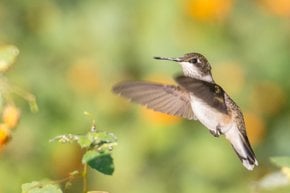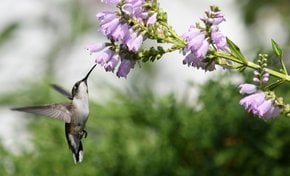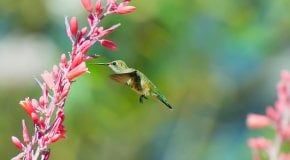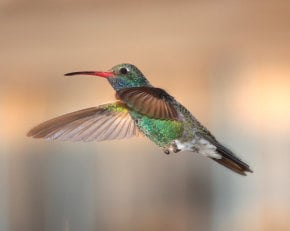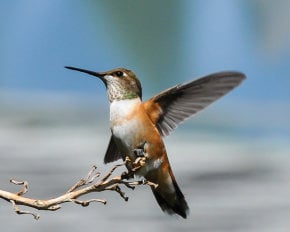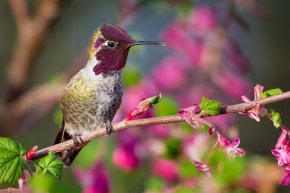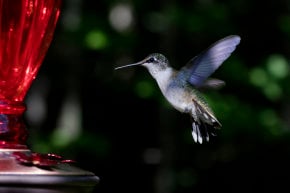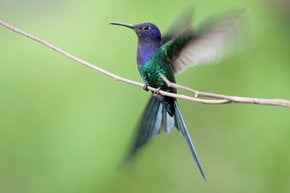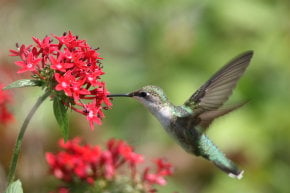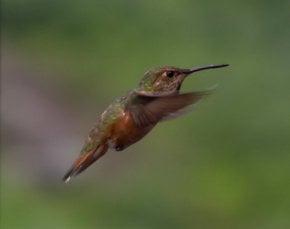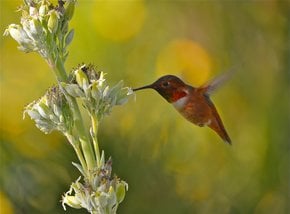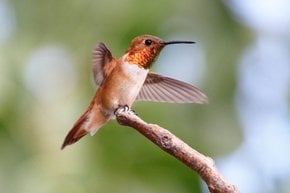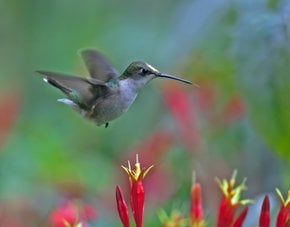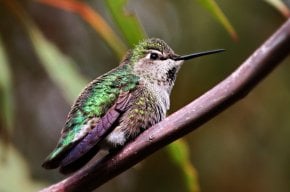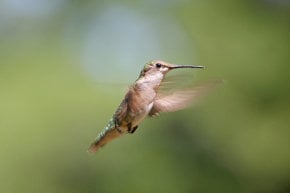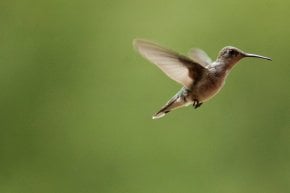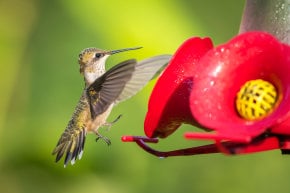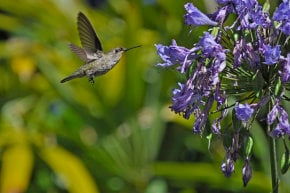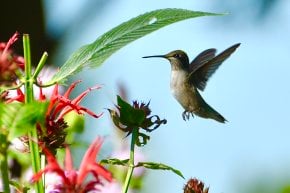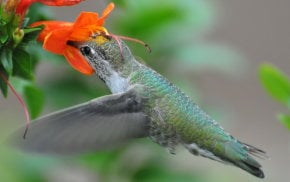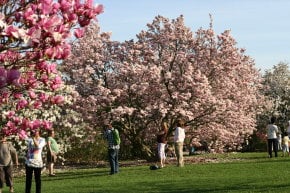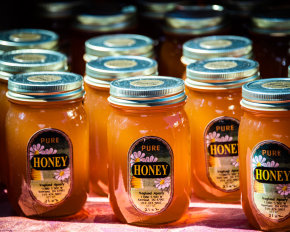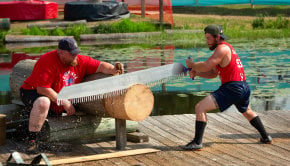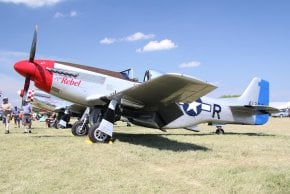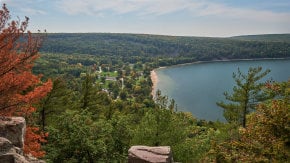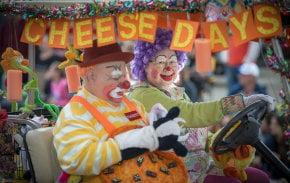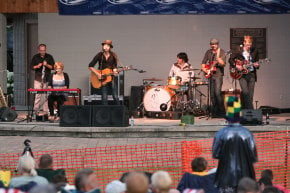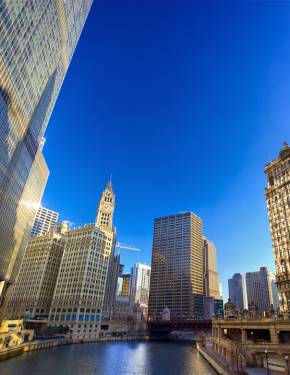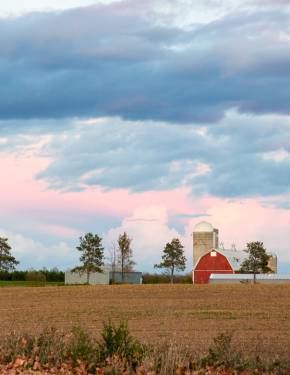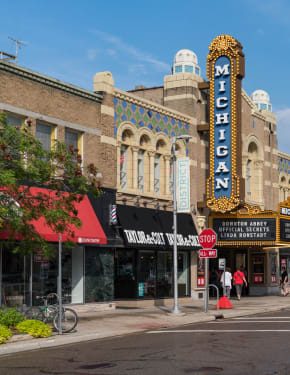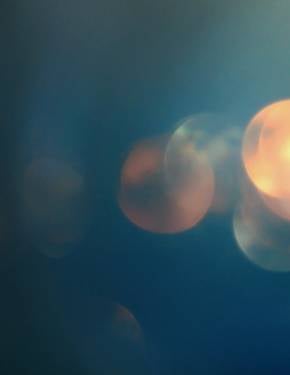Hummingbird Migration in Wisconsin 2026
Catch a glimpse of the little flying jewels with iridescent feathers in the Badger State
Best time: early May–late September
A ruby-throated hummingbird (Archilochus colubris) is Wisconsin's only native species that winters in tropical Central America and returns to its northern nesting grounds in early May. Males arrive first, sometimes already in late April, and stake out their feeding territories. Wisconsin, along with other north-eastern states and south-eastern Canadian provinces, falls into the ruby-throats' breeding range. So you can see some hummers throughout summer until they are back on their return journey south. Most birds depart by late September.
The nesting occurs mainly in June. This month is when bird feeders might get somewhat quiet as females engage in raising the chicks. On the other hand, during this period, you could get lucky and spot a tiny nest shaped like an open cup about the size of a golf ball. Despite low chances, you could occasionally discover a well-camouflaged hummers' cradle in a tree or a bush. Ruby-throats are common in suburban neighborhoods in Milwaukee and throughout the state.
The sightings become more frequent by late summer and early fall when the bird population, replenished by fledglings, resort to backyard feeders to fatten up. Prepare artificial nectar from sugar and water (the ratio of 1:4), and you'll witness the frenzied feeding. The hummers tank up on sugar water for a reason—they need to put on weight to have enough energy for a grueling long-distance migration, including non-stop flying above the Gulf of Mexico.
If you leave your feeder longer than the ruby-throat season, some other winter vagrants could pay a visit to your house. Rufous hummingbird (Selasphorus rufus) and other rare guests sporadically show up between late October and January. Just remember to clean and refill the feeder even if it's not emptied yet. Don't treat your diminutive aviary friends to a moldy home brew.

